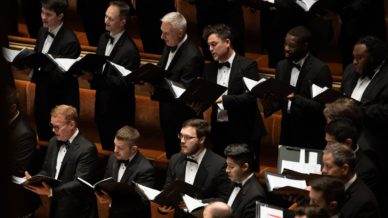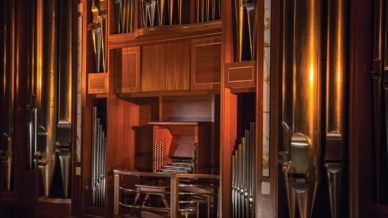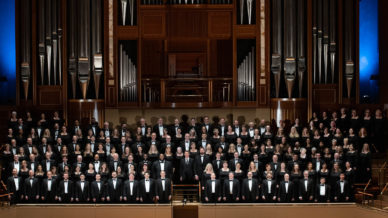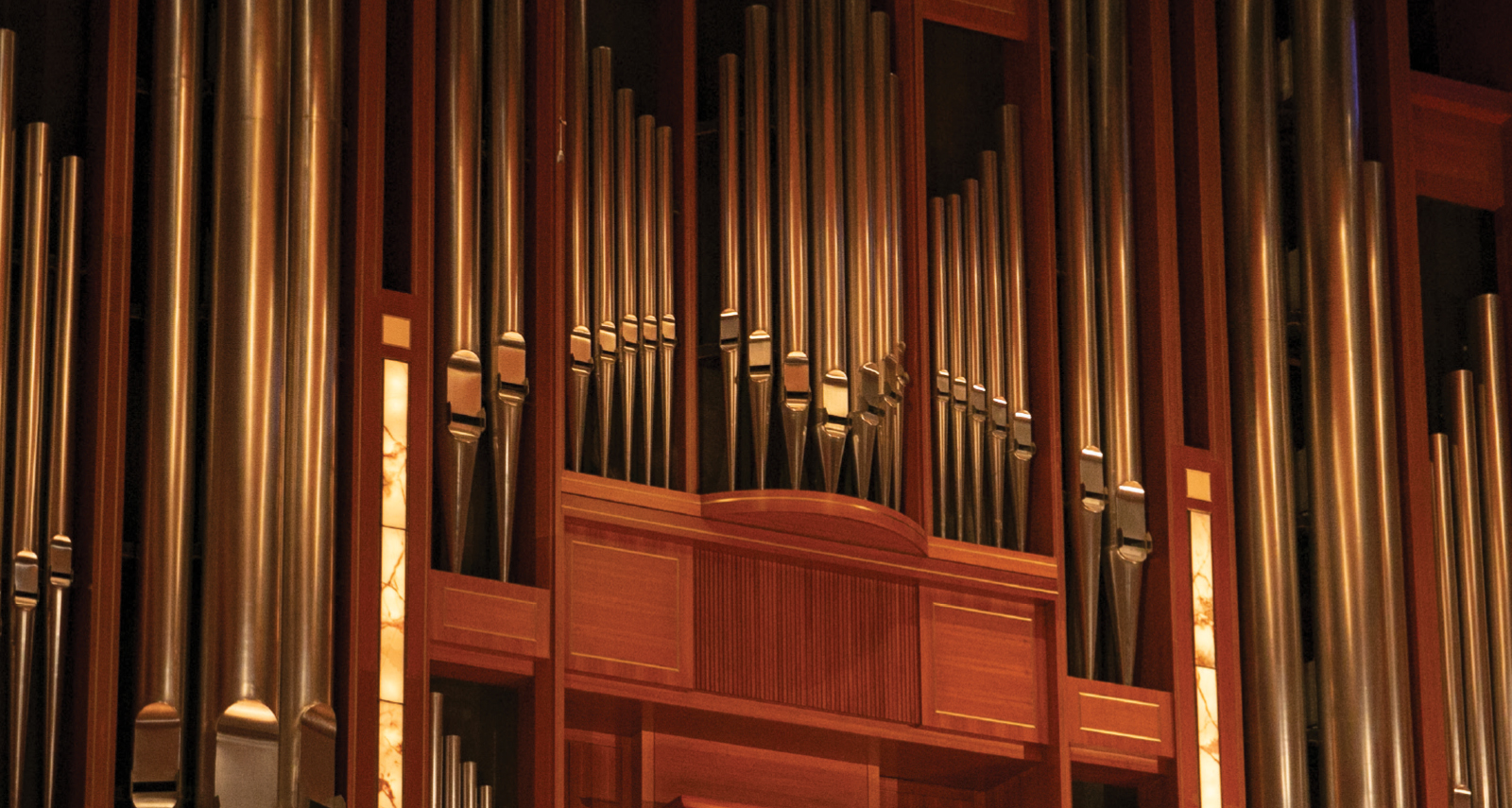

Cherry Rhodes | Gould Family Organ Recital Series
September 25, 2022
CHERRY RHODES organ
BACH Präludium und Fuge e-moll
WILLIAM GRANT STILL Reverie
JEAN GUILLOU Ballade Ossianique No. 2, “Les chants de Selma”
FR. JOSEPH WALTER Chorale, Diferencias, & Glosas on Puer Natus in Bethlehem
LOUIS VIERNE Pièces de fantasie, Suite No. 2, “Clair de lune”
MAX REGER Fantasie und Fuge d-moll
Cherry Rhodes is the first American to win an international organ competition (Munich). She has toured extensively through major music capitals of America, Europe and Asia with recitals in world-renowned cathedrals, churches concert and concert halls including Notre Dame, Royal Festival Hall (London), International Performing Arts Center (Moscow), Walt Disney Concert Hall, Lincoln Center and Kennedy Center. She returns to the Meyerson Symphony Center after having last performed here in 1993.

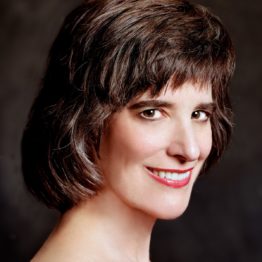
Program Notes
by RenĂŠ Spencer Saller
Orphaned at age 10, Bach moved in with his older brother Johann Christoph, an
organist at St. Michaelâs Church in Ohrdruf, a small town in the German state of
Thuringia. Young Johann Sebastian was a quick study. Before he was out of his teens,
he was in demand as a professional organist. Within a few years, he was the leading
organist of his age. By all accounts, he was an extraordinary virtuoso, wowing
onlookers with his fleet passagework and nimble feet, but he was also an expert on
the mechanics of the instrument. He was often asked to try out new organs and tune
them to his exacting specifications, and he took an obsessive interest in the acoustic
properties of the halls and churches that housed the instruments.
Although establishing firm dates is often impossible, Bach probably composed most
of his major organ works between 1708 and 1717, when he was court organist for
Dukes Wilhelm Ernst and Ernst August in Weimar. During those years he produced
the Orgelbuchlein (The Little Organ Book); working drafts of the âGreat 18â
Chorales; most of his finest surviving preludes and fugues; and countless
transcriptions of Vivaldi concertos.
His Prelude and Fugue in E Minor seems to have been completed several years later,
however, most likely between 1727 and 1736, when he was working in Leipzig.
Somewhat unusually for Bach, the autograph fair copy of the score still exists,
although the handwriting changes to that of a student–copyist 22 measures into the
fugue.
A Closer Listen
Ranked by Franz Liszt as one of Bach’s six greatest works in its genre, BWV 548 is a
master class in organ writing. The prelude is both elaborate in its detail and grand in
its scope. Likewise, at 231 measures, the fugue is one of Bach’s most intricate and
monumental. The work’s nickname, “the Wedge,” refers to the first half of the fugue
subject: as the idea develops, following a characteristic pattern of descending
chromatic fourths, Bach seems to create a kind of musical “wedge” against the home
key, butting up against it to create more harmonic space. The fugue is organized in
three parts, but the third is a note–for–note repetition of the first. The central section
contains most of the daunting toccata–like passagework.
works, including eight operas and five symphonies. He was the first Black American
to compose a symphony that was performed by a major orchestra, and the first to
conduct a major orchestra. In 1949 his opera about Haiti, Troubled Island, was
produced by the New York City Operaâanother historic first.
town bandmaster, died when he was three months old. He and his mother moved to
Little Rock, Arkansas, where she remarried. He began taking violin lessons at age 14
and taught himself viola, cello, double bass, clarinet, oboe, and saxophone. In 1911
he enrolled at Wilberforce College in Ohio, where he directed the band. His studies
at Oberlin Conservatory of Music were interrupted by a stint in the Navy. After
completing his service, he played as a sideman for blues legend W.C. Handy, who
brought him to Memphis and then New York City, where he became an oboist in
Eubie Blake’s pit and made arrangements for theater orchestras and jazz and blues
artists. He also studied with the influential atonalist Edgard Varèse.
Reverie was a commission by the Long Beach, Los Angeles and Pasadena and Valley
Districts Chapters of the American Guild of Organists in Celebration of the A.G.O.
National Convention July 2â6, 1962. About four minutes long, the piece mixes
several seemingly incompatible musical idioms into a coherent original language.
Still’s melodyâmeandering, melancholy, through–composedâevokes African
American spirituals, but the dreamy harmonies and textures sound intensely
French.
teacher. He was only 12 when he was appointed organist at the church St. Serge, in
his native Angers. Later, at the Paris Conservatoire, he studied with Marcel DuprĂŠ,
Maurice DuruflĂŠ, and Olivier Messiaen, three titans of the French organ tradition. In
the mid–50s, Guillou taught organ and composition at the Institute of Sacred Music
in Lisbon and began writing music himself. In 1958 he moved to Berlin to obtain
medical treatment for a chronic condition. During these years he continued to
compose original music and made his first recordings at Lutherkirche and St.
Matthias Church.
In 1963 he returned to Paris. For the next 52 years, until 2015, he served as titular
organist at Saint–Eustache in Paris, where he was known for his brilliant
improvisations and distinctive transcriptions of composers whose works might
have otherwise seemed ill–suited to the organ repertoire. He strongly believed that
his instrument belonged in concert halls as well as churches and cathedrals, and he
often performed internationally: in 1966 he played Max Reger’s Fantasia and Fugue
on BACH, Op. 46, at the Berlin Philharmonie, to commemorate the 50th anniversary
of Reger’s death.
Guillou composed more than 90 works for organ, orchestral, and chamber music,
and made many transcriptions, as well as more than 100 recordings. He also
published several books, including collections of poetry.
1971 and revised it in 2005. He dedicated it to Cherry Rhodes, his former pupil and
assistant for two years at Saint–Eustache.
“The present composition, recast several times, represents the final version of what
was originally, like some of the Sagas, one of my recorded improvisations. After the
ongoing growth of a note from pianissimo to the fortissimo of a chord thrust out like
a cutting sword, undulating phrases conjure up a landscape shrouded in mist. The
ongoing note appears, and soon isolated notes, falling like drops of rain in a cave,
seem to constitute the outline of a melodic figure in embryo. This latter, after
numerous episodes of expectancy and sometimes menacing solitude, gradually
takes shape, as though feeling its way through the darkness. Periodically,
developmental passages are interrupted by the insistent note, which each time
seems keen to push back the hostile forces. The thematic cell, the sole cell
constituting the constructional element of the whole work, now flares up and breaks
through the innumerable shifting forces. At last a kind of transfiguration takes place
in this torment, giving way to a concluding hymn full of enthusiasm and
jubilation.ӉJean Guillou
his MFA from the State University of New York at Buffalo, where he studied
composition with Morton Feldman and William Kothe.
In addition to being a teacher and composer, Walter also serves as a pastor for two
parishes in Fredonia, New York.
Rhodes has debuted other works by Walter, including Variations on Salve, Festa Dies
for Two Organs (1999) and the related Meditations on Salve, Festa Dies, for organ
solo (2002). With Rhodes in mind as organist, Walter spent three–and–a–half years
writing the Chorale, Diferencias and Glosas on Puer Natus in Bethlehem, completing
the work in 2016. He was inspired by a 13–century Gregorian chant, a Christmas
hymn.
In a telephone interview published in the New York Observer around the time of the
premiere, Walter remarked that Rhodes is “a virtuoso, and it takes a virtuoso to play
the piece, as it’s not an easy piece to perform.” The Diferencias (similar to a
development section in sonata form) and Glosas (ultra–embellished variations) are
musical procedures associated with Spanish Renaissance composers such as
Antonio de Cabezon. Among the many delights in this vivid and virtuosic 17–minute
work is a pedals–only cadenza.
The Composer Speaks
reflective of the hymnâs ideas and sentiments. These embrace both the tenderness of
the newborn Babe, who is Divine Love made visible, and the power of the
Incarnation, which restores order to the cosmos, bringing salvation to a world
sorely in need of redemption.â
“I came into the world almost completely blind, on account of which my parents felt
a very keen chagrin,” Vierne recalled. With the aid of a powerful magnifying glass, he
studied counterpoint under CĂŠsar Franck, whom he first encountered at age nine,
when the older man’s powerful performance at Sainte–Clotilde inspired Vierne to
become an organist. After the death of his first mentor, he turned to Charles–Marie
Widor, another giant of the French symphonic organ tradition. Although Vierne
became a revered professor himself, he still showed Widor drafts of everything he
composed well into his late 30s.
From 1900 until his death, Vierne served as principal organist at Notre Dame
Cathedral, in Paris. The state–of–the–art CavaillĂŠ–Coll instrument, with its
unprecedented range of registrations, fully exploited the tonal possibilities of the
evolving French “symphonic style.” Vierne’s six organ symphonies are hallmarks of
the genre. His Pièces de fantaisie, four six–movement suites, were composed in 1926
and 1927 for his wildly successful American tour. “Claire de lune” comes from Suite
No. 2, where it serves as the penultimate movement. Although Vierne greatly
admired Claude Debussy, this long, highly expressive Adagio in D–flat major isn’t
especially indebted to the more famous piano piece by that name.
Bach, Reger is somewhat neglected today. Born in Brand, Bavaria, he received his
early training from a Weiden organist, Adalbert Lindner, who recommended him to
his own former master, Hugo Riemann. Under Riemannâs tutelage, Reger immersed
himself in the study of counterpoint and other formal procedures, poring over
Brahms and Bach scores to master the nuances of variation, fugue, and fantasia. He
finished his studies and then taught music theory until his compulsory year of
military service began in 1896. After a few years recuperating from this experience,
which he found highly traumatic, he moved from Weiden to Munich, where he
taught music and launched a pointless and polarizing campaign against Riemann,
his former master. He called this harsh rhetoric a âwar of progress,â but it certainly
didnât take his career very far.
major organ compositions. Intensely chromatic, with smeary chords and abrupt
modulations, they are notoriously difficult. Unsurprisingly, they werenât very
successful, either commercially or critically. They did, however, bring Reger his
ensured their place in the organ virtuosoâs repertoire.
With the assistance of Straube, Reger completed his Fantasie und Fuge in D Minor
on March 1, 1916. The 43–year–old composer died of a heart attack in a Leipzig hotel
room two months later, before the work’s premiere and publication. Dedicated to
Richard Strauss, the Romantic, technically tricky diptych is one of his last
compositions. The Fantasie presents the main theme, decorated and in different
voices. The Fugue consists of two contrasting parts: one somber and somewhat
dense, the other lively and transparent. Reger’s original manuscript bears a
handwritten note by Elsa Reger, the composer’s wife: “In memory of my dear
godson Max Hanfried Poppen, from Frau Max Reger, Munich April 1937.”
